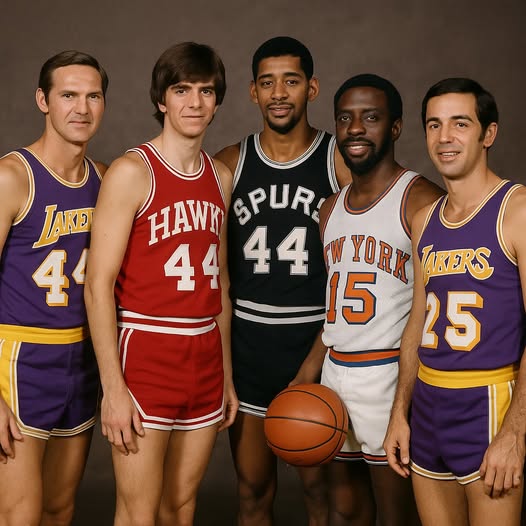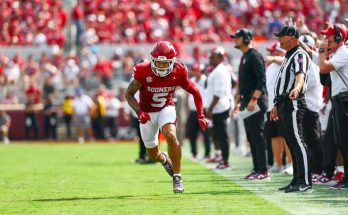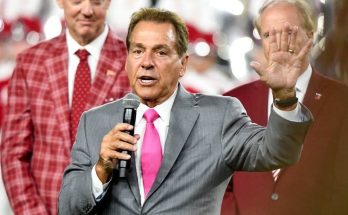The 1970s in the NBA were a time of transformation, transition, and tremendous talent. The decade bridged the era of rough-and-tumble physicality from the 1960s with the more athletic, high-scoring style that would blossom in the 1980s. It was also the decade that introduced parity to the league, with eight different champions in ten years—a far cry from the dynasties that would dominate later periods. In the midst of all this change, one position quietly stood at the crossroads of finesse, ferocity, and flair: the shooting guard.
The shooting guards of the 1970s were not just scorers—they were often the engines of their teams, defining both tempo and temperament. While the term “two-guard” has evolved over the years, during this decade, it was often synonymous with the most explosive athletes and the purest perimeter scorers. While there were many capable players at the position, a select few transcended their roles and stamped their legacy on the league in ways that are beyond debate. These are the definitive best NBA shooting guards of the 1970s—no questions asked.
Clyde “The Glide” Frazier is often classified as a point guard in retrospect due to his ball-handling and floor leadership, but for much of his prime in the early 1970s, he functioned more as a combo guard with a scoring mentality. While he split duties with fellow backcourt mate Earl Monroe, it was Frazier who brought swagger, lockdown defense, and an uncanny ability to control the game’s rhythm. He was a seven-time All-Star in the ’70s and a two-time NBA champion with the New York Knicks. His 36-point, 19-assist performance in Game 7 of the 1970 Finals remains one of the most iconic showings in NBA playoff history. Frazier redefined what it meant to be both stylish and ruthless on the court, making him a clear inclusion on this list despite his hybrid guard role.
Speaking of Earl “The Pearl” Monroe, there’s no way to talk about elite 1970s shooting guards without mentioning him. Monroe, before teaming with Frazier in New York, was a straight-up phenomenon with the Baltimore Bullets. Known for his streetball-inspired style, lightning-quick first step, and impossible-to-defend spin moves, Monroe made scoring look like art. His 27-point-per-game season in 1969-70 was a precursor to what he continued to do in the early part of the decade. Though he toned down his scoring while adjusting to the Knicks’ team-first approach, his overall brilliance never dimmed. He helped lead New York to the 1973 championship, proving he could be both a solo star and a team-focused contributor. Monroe’s creativity influenced a generation of guards who would later take over the league.
Another name that must be etched into any discussion of 1970s shooting guard greatness is Pete Maravich. “Pistol Pete” was less a basketball player and more a magician on the court. With floppy socks, flowing hair, and an arsenal of behind-the-back passes and step-back jumpers, Maravich was the embodiment of flash. But don’t let the showmanship fool you—he was as deadly a scorer as the league had ever seen. Maravich led the NBA in scoring during the 1976-77 season, averaging 31.1 points per game for the New Orleans Jazz. This was an era before the three-point line, and Maravich routinely launched shots from distances that would make today’s stars blink. He was a five-time All-Star and three-time All-NBA selection in the 1970s. Though he never won a championship, his impact on the game, especially at the two-guard position, is beyond dispute. He was poetry in motion, and few could match his blend of skill, improvisation, and sheer scoring ability.
Then there’s George “The Iceman” Gervin, whose rise in the late 1970s marked a shift in how the shooting guard position would be played for decades to come. Gervin was cool personified—his nickname wasn’t just for show. He had the most unbothered demeanor on the court, yet he could dismantle defenses with his trademark finger roll and feathery jumper. Gervin played most of the decade with the San Antonio Spurs, first in the ABA and later in the NBA after the merger. From 1977 to 1980, he won three straight scoring titles, averaging over 30 points per game in multiple seasons. His smooth, effortless game made him nearly unguardable, and he wasn’t just a scorer; he was a rhythm creator. His ability to control the tempo, lull defenders into complacency, and then strike with sudden elegance made him a prototype for modern shooting guards. Gervin would go on to become a Hall of Famer, and while his prime extended into the early 1980s, his impact in the ‘70s solidified his place as one of the best to ever play the position.
One name that doesn’t get mentioned often enough in casual circles but demands inclusion on any serious list is David Thompson. Though more known for his legendary vertical leap—allegedly over 44 inches—and being Michael Jordan’s idol, Thompson was also an elite scorer and competitor. In 1978, he scored 73 points in a single game, one of the highest-scoring performances in NBA history. Thompson was a four-time All-Star and two-time All-NBA selection during the 1970s and was a fierce competitor both in the ABA and after the merger. His mid-air acrobatics, mid-range shooting, and ability to take over games put him in the elite class of his era. Unfortunately, injuries and off-court issues shortened his prime, but during his peak in the late ‘70s, few guards could match his explosiveness or star power.
An often-overlooked figure in the pantheon of great 1970s shooting guards is Gail Goodrich. Playing alongside Wilt Chamberlain and Jerry West on the Los Angeles Lakers, Goodrich was often the stabilizing scorer and playmaker. His best season came in 1971-72 when he averaged over 25 points per game and led the Lakers in scoring during their historic 33-game winning streak and eventual championship run. Goodrich was a five-time All-Star and made the All-NBA First Team in 1974. He was quick, intelligent, and always in control. Though his personality was quiet, his game spoke volumes. He exemplified the team-first mentality while still putting up elite numbers, something few players could do with such consistency.
While discussing 1970s shooting guards, the ABA cannot be ignored, as many of the best players spent a significant portion of the decade in the rival league before the merger in 1976. One such talent was Louie Dampier, a founding member of the Kentucky Colonels. While not as flashy as others on this list, Dampier was incredibly efficient, deadly from the perimeter, and a fierce competitor. He was a seven-time ABA All-Star and the league’s all-time leader in points and assists by the time the ABA folded. Though his NBA stint was brief post-merger, his dominance in the ‘70s cannot be denied when evaluating the best at his position during that era.
Another ABA standout was Freddie Lewis, who played with the Indiana Pacers and was a key contributor to their multiple championships. Lewis could score in bunches, played tenacious defense, and was known for hitting clutch shots. He may not have had the long-term star power of Maravich or Gervin, but in terms of impact and importance during the decade, his resume speaks for itself.
The 1970s also gave rise to the idea of the complete two-way shooting guard, and few players exemplified this better than Dennis Johnson, even though his star didn’t fully blossom until the late ‘70s and into the ‘80s. He was a key part of the Seattle SuperSonics’ 1979 championship run, earning Finals MVP honors for his defensive tenacity and timely scoring. Johnson was a lockdown defender, something not always prioritized in conversations about shooting guards. His strength, defensive IQ, and clutch shot-making earned him accolades that extended well beyond his years in Seattle, though it was during the late 1970s when his legacy began to form.
In reviewing the best shooting guards of the 1970s, it becomes clear that this was a golden age for the position—not necessarily because of rings won or statistics piled up, but because of the variety of styles, personalities, and innovations that emerged. From the poetic chaos of Maravich to the icy efficiency of Gervin, from Monroe’s streetball flash to Goodrich’s methodical brilliance, each of these players brought something unique to the hardwood. They didn’t just play the game—they redefined what it meant to be a shooting guard. And while the decades that followed would produce icons like Jordan, Kobe, and Wade, the foundation was laid by the fearless and flamboyant artists of the 1970s. There’s no debate: these were the best shooting guards of that iconic decade, and their legacies continue to shape the game today.



